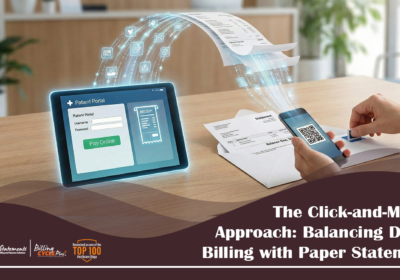How to Practice Empathy in Patient Collection [Guest Blog]

Medical care is an undeniably thorny, emotionally-charged process; while receiving care can be stressful in itself, shouldering the burden of medical costs is another battle.
Eradicating this issue for good requires institutional change, but that doesn’t mean that medical practitioners have their hands tied. Indeed, practicing empathy during patient collection can go a long way in establishing trust and making the best out of a tricky situation. Below are a few solutions to help you do just that.
1. Remember that financial struggles can affect all patients
It’s not just older patients who might be struggling with payment collection. Vox’s examination of the global health crisis notes that medical debt is a growing issue that plagues millennials. Such situations immediately add a layer of challenge for them, especially when it comes to managing debt and building credit.
Part of the problem is that some patients don’t know the options available to them. Petal Card’s feature on solving the credit debt problem clarifies that there are thousands of additional data points that can establish credit-worthiness, such as regular bill payments and other existing financial data. Proper guidance is indeed important from day one, and it’s up to medical professionals to let them know about their alternatives and offer payment plans to help alleviate the upfront costs.
2. Be aware of the nonverbal cues you’re sending
A 2012 study published in the British Journal of General Practice notes that there is a strong correlation between physician empathy and patient satisfaction. That being said, practicing empathy encompasses both verbal and non-verbal cues. Matching the tone of your voice to your patient’s can help them feel heard — while you may want to brighten up the mood with a cheerful tone, doing so when your patient clearly sounds anxious can make it seem as though you’re disregarding their emotions. You should also do your best to make sure your body language stays open, so keep your arms uncrossed, maintain proper eye contact, and nod as you listen to them.
3. Practice active listening
If you’ve never tried active listening before, now is the time to incorporate it. Active listening is about quieting down your own assumptions: instead of formulating conclusions and answers right away, take the time to really listen to your patient’s concerns. The Chicago Tribune notes that hospital chaplains practice active listening to deal with patients’ concerns, but there’s no reason that medical practitioners can’t do the same. Active listening deepens your relationship with your patient and can often help you get to the root cause of the issue. It’s in our nature to want to find solutions as soon as possible — especially when it comes to something as pressing as a medical bill — but taking the time to really hear your patient out can also help the both of you arrive at a feasible workaround.
4. Make the process as clear as possible
People are often scared of medical bills because of how confusing they can be. Our post on the 5 Top Healthcare Billing Mistakes cites confusing bill statements as an issue even on the administrative front, so you can imagine what it must be like for a patient with no idea as to how the system works. It’s important to take the time and outline what the patient is being charged for, as well as how much of their insurance (if any) can cover the costs. Demystifying the details of a medical bill can help give your patient a clearer idea of how to move forward.
Patient collection is a nerve-wracking time for all parties involved. Practicing empathy helps ensure that this necessary evil becomes an opportunity to build patient trust.
Exclusively written by Hailey Waters for Mailmystatements.com
LEARN MORE ABOUT HOW OUR SOLUTIONS CAN SAVE YOU TIME AND MONEY!
![]()



